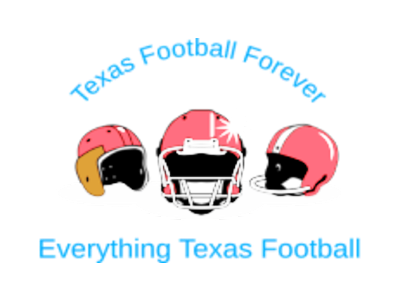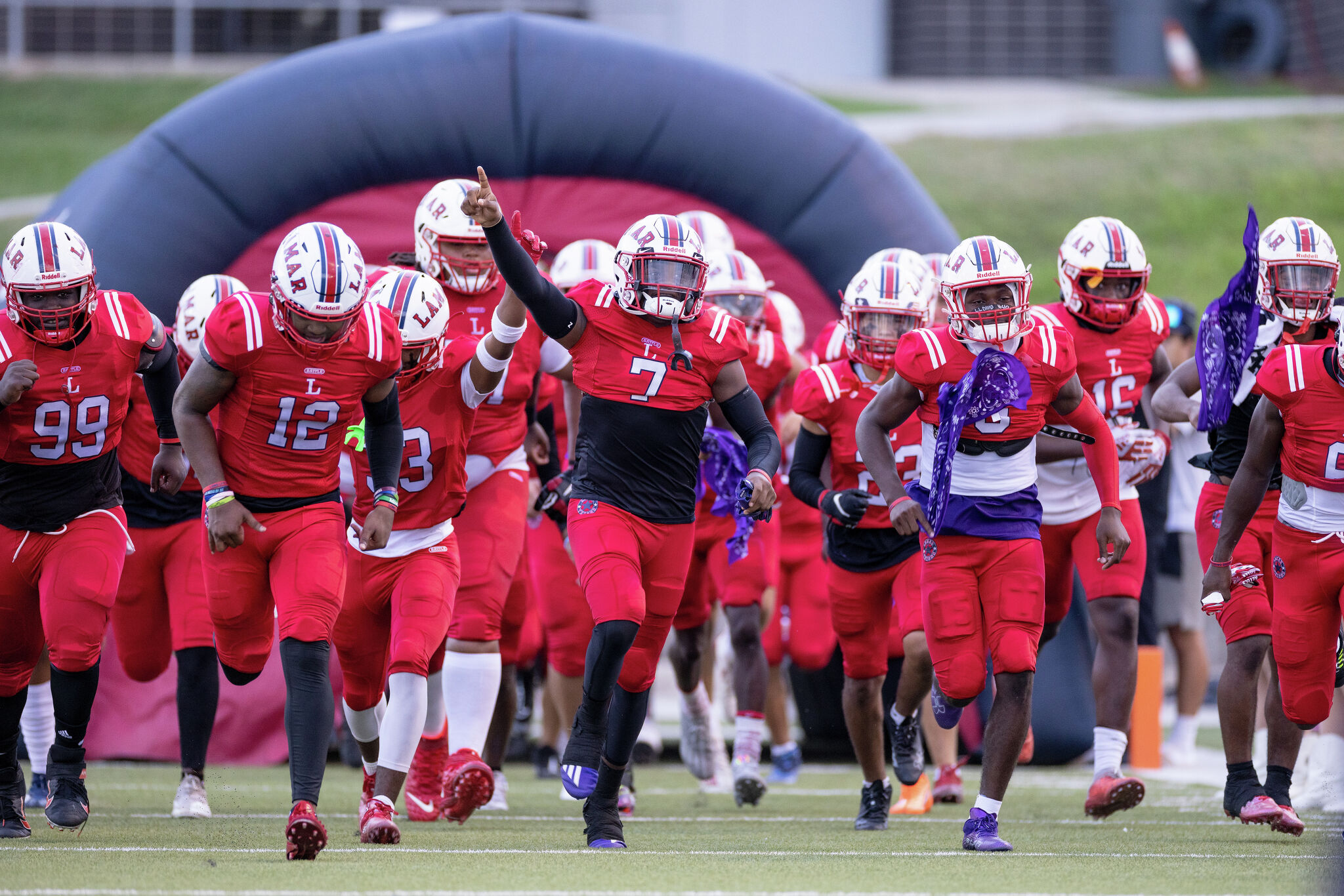Deep in the heart of the Lone Star State, Texas, Friday nights light up not only with the stars but also football stadium lights, beckoning the community far and wide. With an astounding 1.3 million enthusiasts and growing, High School Football in Texas is more than just a game – it’s a lifestyle. It stands as a cherished ritual, a milestone, and embodies the essence of the Texan spirit!
From quaint villages to bustling metropolises, spanning from the Valley through the Panhandle and from Piney Woods to Trans-Pecos, the economic uplift from school gridiron events in Texas is palpable.
But what makes high school football in Texas stand apart from other states, and why is it deeply woven into the fabric of Texan identity? In this article, you’ll journey through the towns and cities of Texas, uncovering the passion, history, and significance of high school football and its undeniable impact on the state’s culture and economy.
So, Let’s explore the magic beneath those stadium lights!
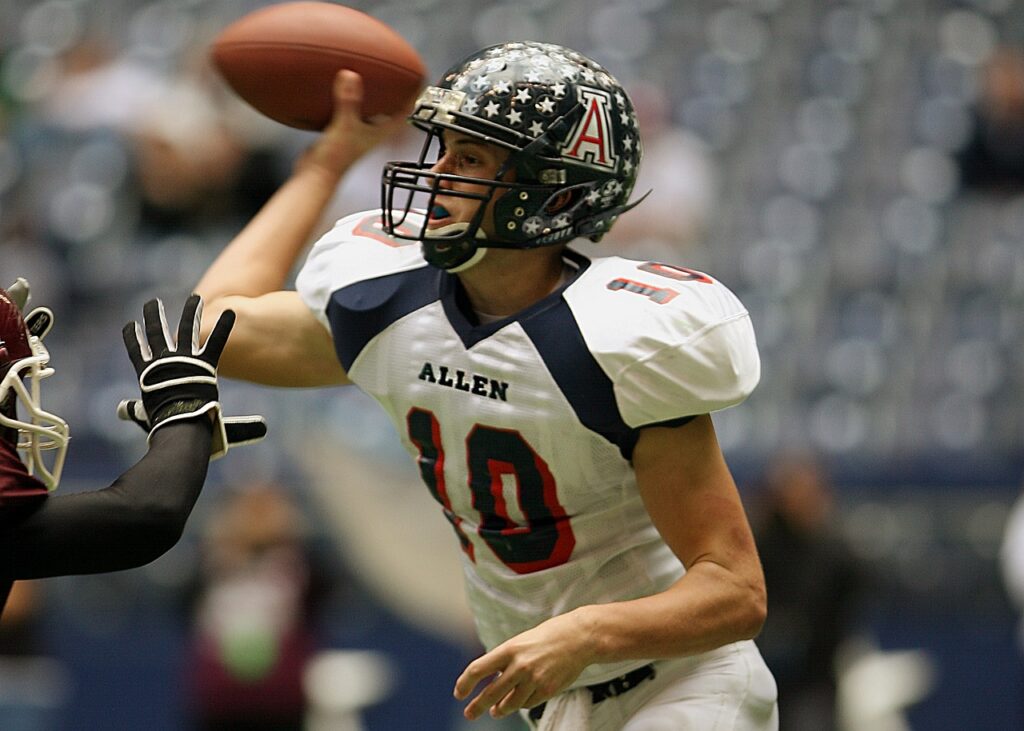
Why Is High School Football So Special In Texas?
Generally speaking, football runs deep in the veins of a true Texan. Many in the Lone Star State believe that they have inherited their love for football in their DNA. This explains why high school football holds such a significant place in Texan culture. Capturing the title of high school football champion in Texas isn’t just about the trophy; it’s a testament to a town’s prowess and pride.
Dive into the school football culture of Texas, and you’ll instantly grasp its significance to the locals. Everywhere you look in Texas, the enthusiasm for football is evident. And if you’re eager for a firsthand experience of this Texan gridiron charm. Swing by a community 7-on-7, or check out a Star Showcase!
The Houston Chronicle once said that for many folks in Texas, football’s as much a part of them as their own heartbeat. The energy and love they pour into the game? Well, you’d be hard-pressed to find that kind of devotion in any other place.
It’s undeniable: Texans are passionate and emotional about football. This enthusiasm spreads like wildfire, capturing hearts from an early age. There is a famous saying in Texas that goes, “We might be too old for trick plays, but we never outgrow crafting them!” This just goes to show how deep football runs in Texan veins and their unwavering dedication to the game – it’s a whole Texas-sized sensation!
Why is Football Such a Big Deal in Texas?
After diving deep into the research, here’s a snapshot of why Texans are so passionate about football!
1: The Rivalries are way too serious!
Texas is well-known for its unique football rivalries. The longest-standing matchup is between El Campo and Bay City High School. These teams have been facing off since way back in 1911! Both teams give it their all every time they play, but only one can come out on top.
Another classic football face-off is found in Central Texas. Think of the epic contests between TCU’s Frogs and the Longhorns of Texas. Their on-field clashes started as early as 1893. They had another noteworthy game 29 years after their inaugural match. By 2011, their competitive spirit hit another high. Surprisingly, this match clinched the #86 position on ESPN’s prime Big 12 showdown list.
2: Fans’ passion and emotions about the game
Rain or shine, those teams are on the field! When it’s Friday night in Texas come autumn, you bet it’s time for some football.
The atmosphere at these Texas school gridiron events Is electric, making the arenas resonate with excitement. Stadiums packed to the rafters, with folks from all walks of life gathering for some good ol’ pigskin fun.
The vibe at Texas high school football games is electric, filling up whole stadiums. Immersing oneself in such a game, surrounded by equally enthusiastic supporters, is an experience second to none.
3: The bigger, the better!
Down in Texas, folks often say, “Everything’s bigger.” And boy, does that ring true when it comes to high school football arenas. Of all the U.S. states that bleed football, Texas stands tall. Comparing the Lone Star State’s stadiums with those in places like Arizona, Connecticut, Florida, Georgia, Illinois, Kentucky, and Massachusetts, Texas clearly raises the bar.
One only needs to glance at the monumental Cougars Arena in La Porte or the sprawling Eagle Nest Stadium – boasting space for 18,000 avid fans and an impressive $59 million budget. In Texas, when talking about football and venues, the sentiment seems clear: “Aim high or not at all!”
Moreover, San Antonio’s Alamo Stadium, often called “The Rock Pile,” boasts a seating capacity of 23,000. It also experienced a significant upgrade, receiving a $35 million makeover before the start of the 2014 season. The stadium now showcases new turf, expanded seating, a modern press box, and a high-tech digital scoreboard.
Meanwhile, another crown jewel among Texas’s giant stadiums is Katy Legacy Stadium, located just outside Houston. Holding the title as the priciest high school football stadium in the U.S., it comes with a staggering $72.1 million cost and offers seating for 12,000 spectators!
Top Texas Pro Football With The Richest Football Tradition
Let’s learn about the top pro football in Texas that represent the richest traditions in the state.
Dallas Cowboys
Established in 1960, the Dallas Cowboys quickly became a household name among Texas’s top high school football teams. As one of the NFL’s most celebrated teams, they gained millions of fans from all over the U.S., earning them the title “America’s Team.”
The achievement is commendable. They’ve graced the Super Bowl stage eight times and clinched victory in five. They stand shoulder to shoulder with the San Francisco 49ers, boasting the second-highest number of Super Bowl triumphs.
The NFL Dallas Texans Chapter
The Lone Star state got its first taste of top-tier sports through the NFL’s Dallas Texans in 1952. However, their debut wasn’t ideal, suffering a 24–6 defeat in the expansive Cotton Bowl, which can host 75,000 spectators but only drew around 18,000 for this game.
The season saw a further decline in attendance, plummeting to as low as 10,000 at times. Financial challenges soon plagued the franchise, leading them to hand the reins back to the NFL. The Texans’ presence in Texas for 1952 was cut short, and by the season’s close, the NFL chose to disband the Texans.
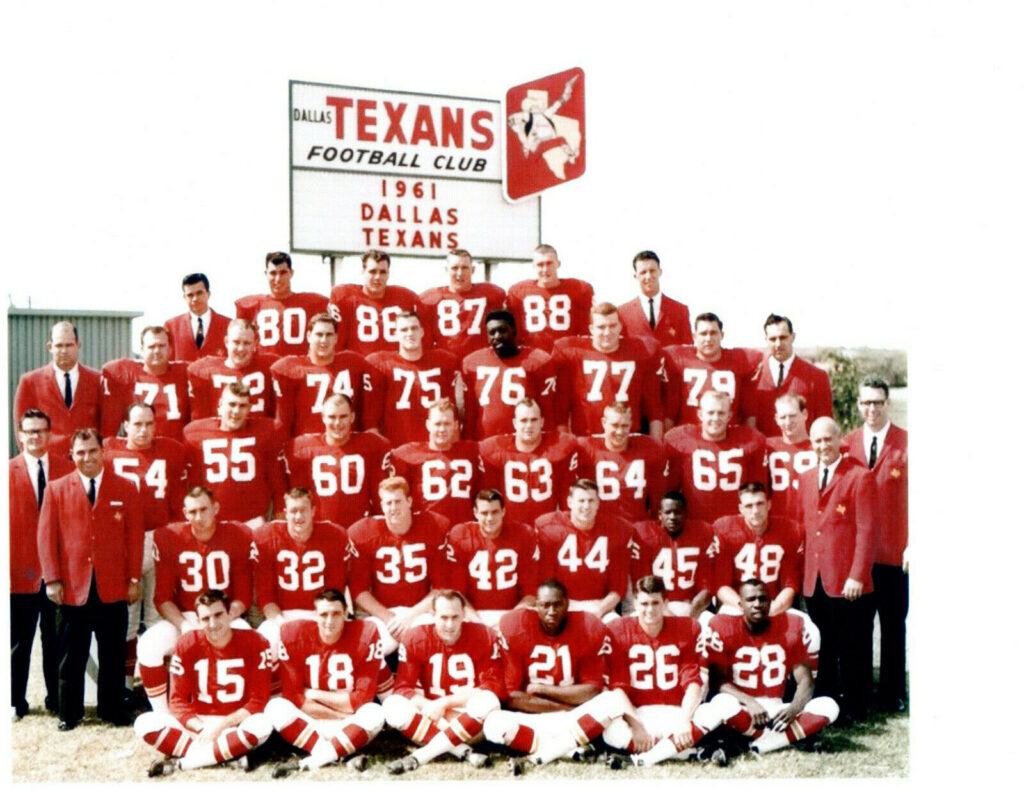
The AFL Era: Dallas Texans & Houston Oilers
1960 marked a monumental shift for Texas football. The Cowboys stepped into the NFL, while the AFL welcomed two fresh teams: the Houston Oilers and a similarly named franchise, the Dallas Texans.
The Oilers took to the field at Jeppesen Stadium, an area now overseen by the University of Houston. Both the Dallas Texans and the Cowboys shared the Cotton Bowl for their home games.
Despite the Dallas Texans (AFL version) securing a championship in 1962, the city couldn’t accommodate two thriving football teams. Acknowledging this, the team’s owner, Lamar Hunt, opted to transfer the team’s base to Kansas City, Missouri. Today, they proudly wear the badge of the Kansas City Chiefs.
The Evolution of the Oilers
After the 1964 season, the Oilers shifted their base from Jeppesen Stadium to Rice Stadium. By 1968, they shared the spotlight with the Houston Astros at the Astrodome. 1966 ushered in a pivotal moment, with the AFL and NFL amalgamating, bringing the Oilers and their AFL counterparts into the NFL fold.
However, as the 90s dawned, a rift between Oilers’ owner, Bud Adams, and the city regarding a modern stadium paved the way for the team’s move to Nashville, Tennessee. Following a brand overhaul, they re-emerged as the Tennessee Titans.
The Oilers played at Jeppesen Stadium, which is now part of the University of Houston. The Texans and Cowboys both played games at the Cotton Bowl.
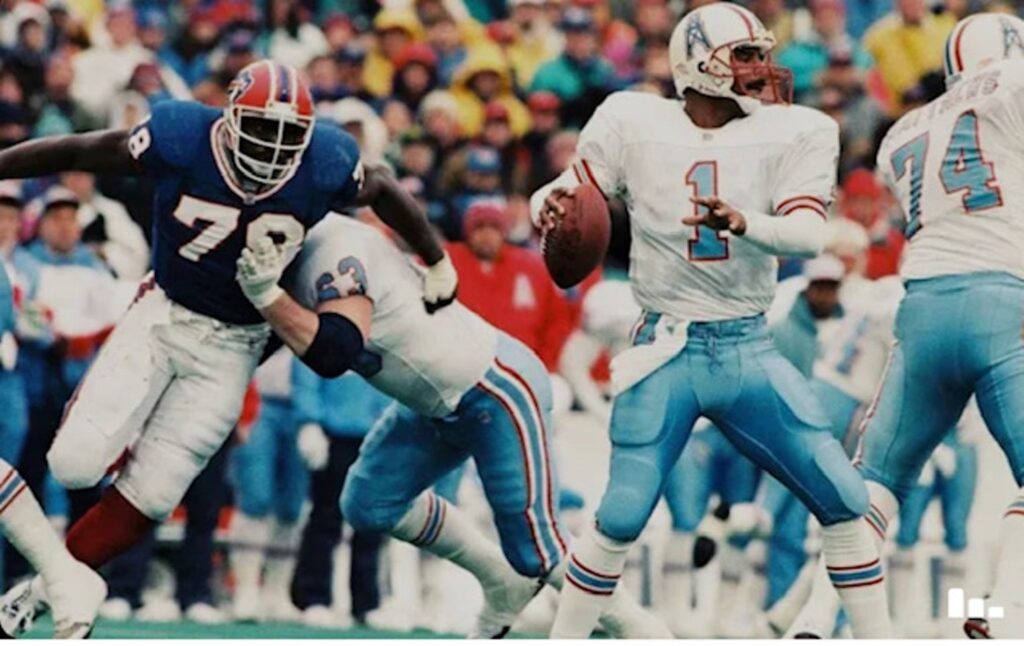
Even though the AFL’s Texans won a championship in 1962, Dallas couldn’t support two football teams. So, the Texans’ owner, Lamar Hunt, decided to move the team to Kansas City, Missouri. Now, everyone knows them as the Kansas City Chiefs.
Why Are Texas High School Athletes Not Allowed To Collect NIL Money Before Graduating?
According to the latest Texas NIL Law, high school athletes are prohibited from profiting from their NIL (Name, Image, and Likeness) money. More specifically, the state law’s section J states that no individual or a corporate organisation can enter into any kind of arrangement with a high school athlete regarding their name, image, and likeness before their enrollment in higher education.
This law revolves around several reasons, which are as follows:
- Maintaining Amateur Status: One of the main concerns is that accepting money might jeopardise a high school athlete’s amateur status, potentially affecting their eligibility to play in college. NCAA rules have changed for college athletes, but high school regulations might not be in synchronisation.
- Recruitment Implications: Allowing high school athletes to profit from their NIL could raise concerns about the recruiting process. Schools or boosters could use NIL deals as a form of recruiting inducement, complicating the landscape of high school sports.
- Unequal Playing Field: If high school athletes start earning money from their NIL, it could create disparities among students and schools. Not all athletes would have the same opportunities, potentially increasing the gap between the “haves” and the “have-nots.”
- Maturity and Decision-making: High school students are younger and may not be prepared for the complexities of business deals, contracts, and financial management. There might be concerns about their ability to make informed decisions or about adults taking advantage of them.
- Focus on Education: High schools might want to ensure students remain focused on their education rather than distracted by potential business deals.
The amateur rule starts when a student begins 9th grade and continues until they finish sports in 12th grade. This rule applies all year round, even during summer holidays. Students must always follow this rule, whether in school or outside.
Schools must teach students about this rule and ensure it is followed. Coaches and school leaders should ensure athletes only get what this rule allows. If someone breaks this rule, it goes against the goals of high school sports.

Is Texas High School Football Better Than Other Schools In The Nation?
Everything is a little different and unique in this Lone Star State, including football! For this reason, you should visit one of Texas’s many enormous football stadiums to get a snapshot of why Texas high school football is better than all other high schools nationwide!
Private schools often attract the best players in other big sports areas like California and Florida and win many championships.
However, in Texas, strict rules about moving schools, separate competitions for public and private schools, and strong community ties, even in the smallest towns, mean public school teams remain dominant. Many coaches and experts don’t see this changing soon, with private teams becoming the big players.
Rich Bartel, who has experience playing and coaching football in Texas and Florida, said, “Texas stands out and is very proud. They have their own way of doing things and are brave enough to stick to it.”
Wrapping Up!
Football is like a religion in Texas. From birth, Texans have a deep love for the game. The passion is evident during the Friday Night Lights events, where even a young 4-year-old can surprise you with impressive throws.
Talents are spotted early, supported by tight-knit communities filled with hope and encouragement. It is common to see examples in the media of students joining top high school football teams or even making it to the NFL.
